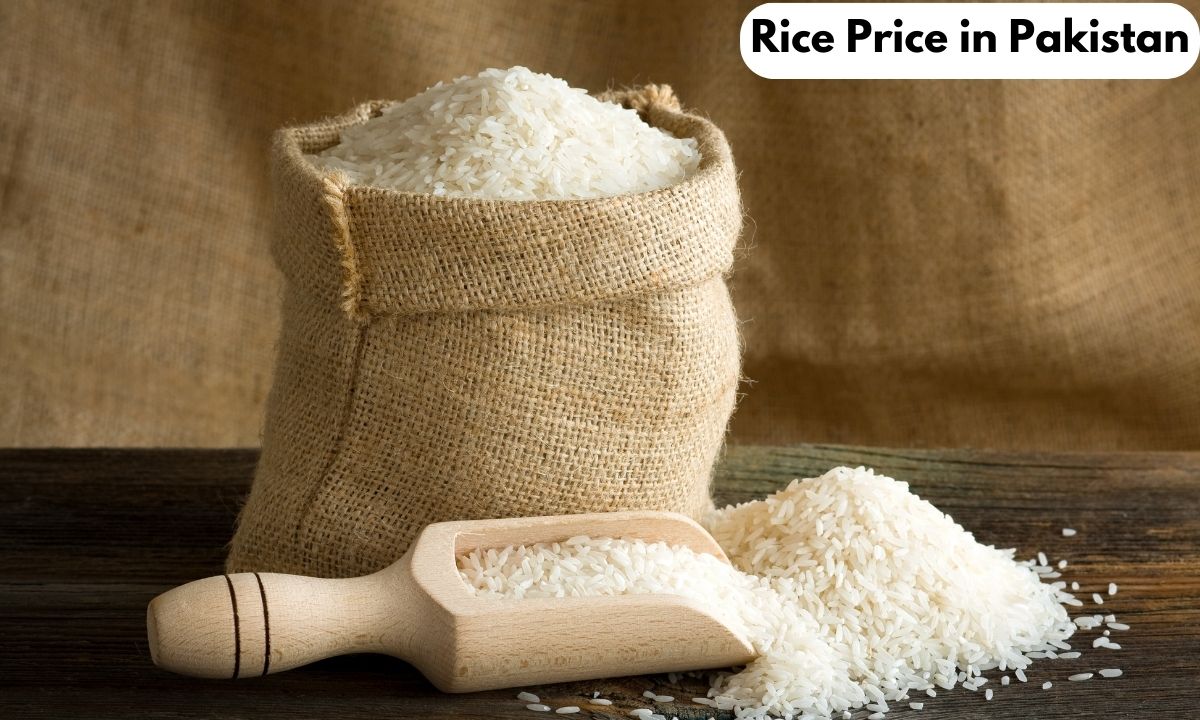Rice Price in Pakistan (2024 Price Guide)
Rice stands as a fundamental ingredient in Pakistani dishes, holding a crucial position in both the country’s economic stability and its ability to feed its people. It makes up about 3.1% of the total agricultural output, providing jobs and income to countless individuals. Presently, when you go to buy rice in Pakistan, you’ll find prices ranging from PKR 350 to PKR 450 per kilogram.
These prices aren’t just random numbers; they mirror Pakistan’s economic health. The production and sale of rice don’t just cater to local needs; they also bring in valuable foreign currency.
Grasping the factors that determine rice prices is vital. It ensures that farmers can earn a fair living, while consumers can still afford this essential food item. In essence, the rice industry’s well-being is closely tied to the nation’s progress and stability.

Historical Trends in Rice Prices in Pakistan
Over time, the cost of rice in Pakistan has consistently climbed, especially when it comes to exports. Within the country, the price you’ll pay for rice depends largely on its type and quality, typically falling between PKR 350 to PKR 450 per kilogram. This upward movement in prices signals a growing appetite for Pakistani rice, both at home and abroad.
When we talk about exports, prices have gone up too. For instance, if you look at the FOB Karachi rates, you’ll see prices like $595/MT for specific types like Pakistan White Rice – 5% Broken. Dive deeper into local markets, and you’ll find diverse offerings online.
For example, a 5 kg pack of Basmati Rice might cost around PKR 1,200, while a 2 kg pack of Brown Rice could be priced at PKR 350. All these numbers tell us one thing: the rice scene in Pakistan is vibrant and ever-changing, influenced by a mix of factors such as demand, supply, and global market dynamics.
| Rice Variety | Price Range (PKR per kg) |
| Basmati 370 | 350 – 4502 |
| Basmati 198 | 350 – 4502 |
| Super Basmati | 350 – 4502 |
| PK 386 | 350 – 4502 |
| PK 1121 | 350 – 4502 |
| Basmati D-98 | 350 – 4502 |
| IRRI-6 | 350 – 4502 |
| IRRI-9 | 350 – 4502 |
Factors Influencing Rice Prices in Pakistan
Rice prices in Pakistan aren’t determined by just one or two factors; it’s a blend of various elements like local and worldwide demand, how much rice is available, government decisions, weather patterns, and unforeseen natural events. Let’s break it down a bit.
On the global front, when countries like India limit their rice exports, it boosts world rice prices. This shift creates a chance for countries like Pakistan to step in and sell more rice at higher prices. This global ripple effect means that if a major rice exporter holds back, nations like Pakistan can benefit from the increased demand, leading to better prices for our rice.
Closer to home, decisions made by countries, like India thinking about stopping some rice exports, can directly affect Pakistan. When such decisions arise, there’s a sudden spike in interest for Pakistan’s rice, pushing its prices up. Plus, it’s essential for the government to step in when needed, helping to keep prices stable. This stability ensures that farmers can plan better and decide which crops to grow.
However, Mother Nature plays her part too. If Pakistan faces heavy rains or unexpected floods, crops can be ruined, leading to less rice available. This scarcity means prices can shoot up. Climate change is making these events more frequent, putting our essential crops like wheat and rice at risk.
Lastly, let’s not forget the role of the government. Their policies, like buying rice or setting certain prices, can tilt the balance. If the government decides to change how they buy or sell rice, it can shift the market and affect prices across the country. So, every decision matters, making it vital for policies to support both farmers and consumers alike.
Impact of Rice Price Fluctuations
The ups and downs of rice prices hold significant weight for both the farmers growing it and the people buying and consuming it in Pakistan. Let’s delve into this:
For our hardworking farmers, the price of rice isn’t just a number; it’s directly tied to their livelihood. When prices go up, it can be a boon for those farmers who produce more rice than they consume. This uptick means more money in their pockets and a potential boost to produce even more. But, the flip side is tricky. If prices swing too wildly, it can be challenging for farmers to benefit. They might face hurdles like not having enough money upfront or being unable to ramp up production fast enough. This situation can trap them in a cycle where they can’t fully profit from higher prices.
Shifting our focus to the everyday folks buying rice, especially those on tight budgets, rising rice prices can be a genuine concern. For families who already spend a large chunk of their earnings on food, even a slight increase in rice costs can pinch their wallets. Imagine having to spend more on the same amount of rice; it’s like getting less food for the same money. This situation hits the most vulnerable the hardest, pushing them deeper into financial strain and making it tougher to put food on the table.
Rice Production in Pakistan
Pakistan holds a notable position in the global rice scene, standing proudly as the 10th largest rice producer worldwide. This achievement isn’t just a number; it’s deeply woven into the country’s economic fabric. A vast number of people find their livelihoods tied to this rice cultivation.
When you look at where this magic happens, Punjab and Sindh emerge as the powerhouses, contributing 56% and 39% to the national production, respectively. And it’s not just about quantity; Pakistan boasts a rich tapestry of rice varieties, from the aromatic Basmati to other non-Basmati types.
Now, let’s talk about how this production dance influences rice prices. Take 2022, for example. Devastating floods meant Pakistan produced nearly 30% less rice than usual, driving prices upward due to decreased supply. On the flip side, recall the 2021-22 marketing year; it was a bumper harvest, setting records.
Such abundant production often means more rice available, which could, under stable demand, translate to more reasonable prices. But, as with many things, it’s not just about what happens within Pakistan’s borders. External factors like international market shifts, government decisions, and unpredictable weather patterns also play their part in shaping rice prices.
The Global Rice Market and Its Impact on Pakistan
The Influence of Leading Rice-Producing Nations
When we discuss rice on a global scale, two giants stand out: India and China. Together, they cultivate a staggering half of the world’s rice. India, in particular, holds a dominant position as the world’s most significant rice consumer, second only to China.
India commands over 40% of the entire global rice trade. The decisions and actions of these behemoths, be it imposing export restrictions or managing surplus yields, can send ripples through the international rice market, affecting prices and availability worldwide.
How Global Dynamics Impact Pakistani Rice Farmers
Now, while the world sees a rise in rice prices, Pakistani farmers seem to miss out on the full benefits. Even as global rice prices soar to their highest in 15 years, thanks in part to export restrictions imposed by nations like India, the earnings of our local farmers haven’t seen a corresponding rise.
This disparity hints at a concerning reality: the windfalls from these elevated global prices aren’t making their way to the grassroots level. Factors at play could range from intricate local market intricacies, inherent cost structures, or middlemen taking a hefty chunk of the profits. And when you layer this with domestic hurdles, like crop damages from floods, you further diminish the farmers’ chances to leverage these favorable international market dynamics.
Future Predictions for Rice Prices in Pakistan
Drawing insights from both historical patterns and the current pulse of the market, the trajectory of rice prices in Pakistan seems poised to be shaped by a delicate interplay of local and global forces.
Local Influences: Within Pakistan’s borders, variables like unpredictable weather patterns, levels of production, and governmental policies will undeniably wield considerable sway over rice prices. For instance, as we look ahead, Pakistan’s rice market is earmarked for a commendable growth rate of 7.48% spanning from 2023 to 2028.
Yet, the immediate future might present challenges. The 2023/24 projections suggest that the country might witness a rice output that trails its typical trajectory. Factors contributing to this deviation include delays in crop sowing triggered by flooding and infrastructural damages, such as impaired storage facilities and transportation routes. Such circumstances could lay the groundwork for an uptick in rice prices within the nation.
Global Dynamics: Casting our gaze internationally, the broader global trends indicate a marginal softening in rice prices. Forecasts hint at a trade price hovering around 16.89 USD/CWT as this quarter draws to a close, with projections dipping slightly to 15.87 USD/CWT over the subsequent 12 months. However, the realignment of these global pricing dynamics with Pakistan’s local realities will be pivotal. The ultimate impact on Pakistani rice prices will be shaped by the intricate dance between these external trends and the unique nuances of the domestic market.
Conclusion
Pakistan’s economic landscape revolves around rice, which is currently priced at between PKR 350 and PKR 450 per kilogram. Examining historical patterns unveils a consistent uptick in both domestic and export rice prices. The ebb and flow of these prices are orchestrated by a complex symphony of factors, encompassing local and international demand, shifts in supply, governmental directives, and climatic conditions.
Price oscillations ripple profoundly, impacting farmers’ income and consumers’ purchasing power. This highlights the pressing need for adept management of rice prices. Pivoting to the heart of the matter, the core of Pakistan’s rice production beats in Punjab and Sindh.
The output from these regions serves as a direct conductor, orchestrating the melody of rice prices. However, the plot thickens when considering global dynamics. Actions taken by major rice-producing nations, India and China in particular, sway the pricing scales in Pakistan. Projections for the future echo the continued resonance of these factors in shaping the trajectory of rice prices.
Understanding these complexities is not merely an option but a necessity when it comes to Pakistan’s agricultural sector. Such understanding is the key to unlocking economic stability and fortifying the nation’s food security. As stakeholders navigate these currents, they tread on the fine line between sustenance and growth, recognizing the pivotal role played by this humble grain in the economic symphony of Pakistan.





